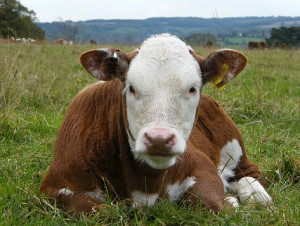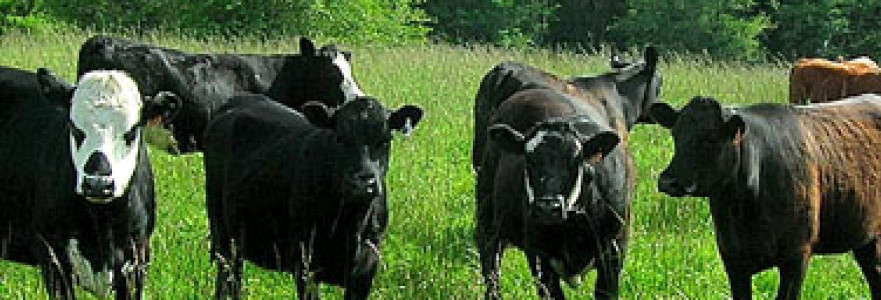Grass Fed Beef Products Has Many Benefits
Grass fed farming or ranching involves raising livestock on open pasture – free to roam about. There is no caging or confinement for these animals, and their diet consists of natural grasses, legumes and plants.  These animals are free of antibiotics, steroids, hormones, pesticides and other foreign substances. Research has shown that grass-fed animals may be safer than food from conventionally-raised animals. According to a study published in the Journal of Animal Science in 2002, grass-fed beef may offer these benefits:
These animals are free of antibiotics, steroids, hormones, pesticides and other foreign substances. Research has shown that grass-fed animals may be safer than food from conventionally-raised animals. According to a study published in the Journal of Animal Science in 2002, grass-fed beef may offer these benefits:
- Lower in Fat and Calories: Meat from cattle, sheep and bison raised on forage is lower in total fat. Lean meats may have as much as one-third the fat as a similar cut from a grain-fed animal. Grass-fed beef can have the same amount of fat as skinless chicken breast, wild deer or elk. Consuming lean beef can also help lower LDL (the “bad” cholesterol) levels. Because it is lower in fat, grass-fed beef is also lower in calories. Fat has approximately nine calories per gram, so the more fat a cut has, the greater number of calories it will have. Even fatty cuts of grass fed beef are lower in fat and calories than beef from grain-fed cattle.
- More Omega-3 Fatty Acids: Grass fed animals can contain as much as two-to-four times more omega-3 fatty acids than grain-fed animals. Omega-3 fatty acids are fats that are essential to our health (they are “good” fats). One reason grass-fed animals are full of these good fats is because omega-3s are formed in the chloroplasts of green leaves and algae. Sixty percent of the fatty acids in grass are omega-3s. For more information on omega-3 fatty acids, click here .
- More Vitamins: Studies have shown that grass-fed beef can have as much as four times more vitamin E than grain-fed beef.Grass fed beef even contain twice as much vitamin E as grain-fed beef that are given vitamin E supplements!
- Good Source of Conjugated Linoleic Acid (CLA): Products from grass-fed animals are the richest known source of conjugated linoeic acid (CLA), which is another type of good fat. CLA is stored in fat cells and has been shown to reduce cancer risks in humans. Grass fed animals contain as much as three-to-five times more CLA than grain-fed animals.
Naturally Raised—According to the USDA, this means livestock are raised without growth promotants or antibiotics and never fed animal by-products. NOTE: This claim is different from the USDA Food Safety and Inspection Service (USDA FSIS) term “natural,” which means that a meat product does not contain artificial flavors, coloring, chemical preservatives or other synthetic ingredients, and is minimally processed.
-
- No Antibiotics—This means the livestock never received antibiotics.
- No Hormones—This means the livestock never received growth hormones.
